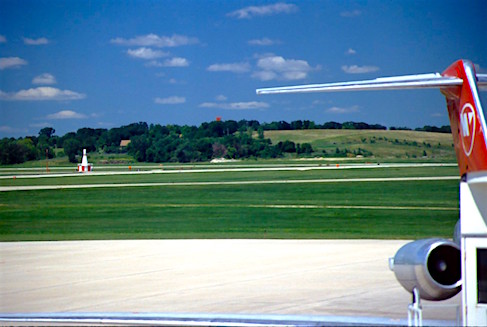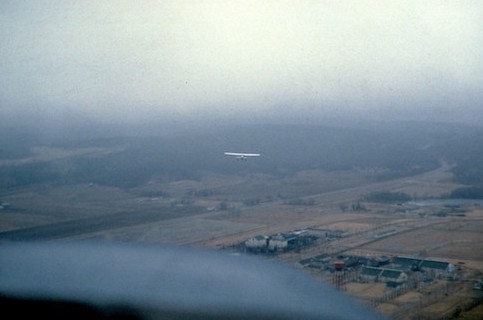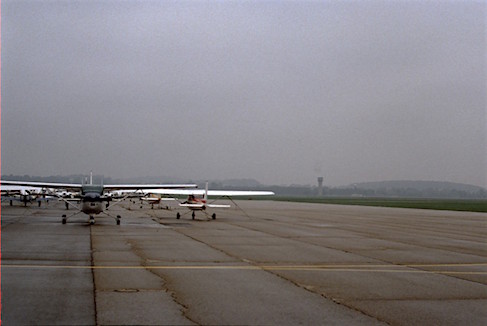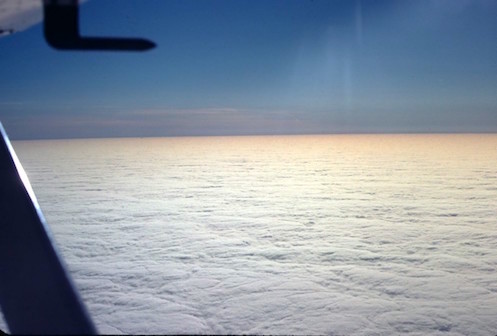ATSC 113 Weather for Sailing, Flying & Snow Sports
Regulations: VFR vs. IFR
Learning Goal 1g. Explain the difference between visual & instrument flight rules (VFR, IFR) and meteorological conditions (VFC, VMC, IFC, IMC), and how they affect aviation.
Visual Flight
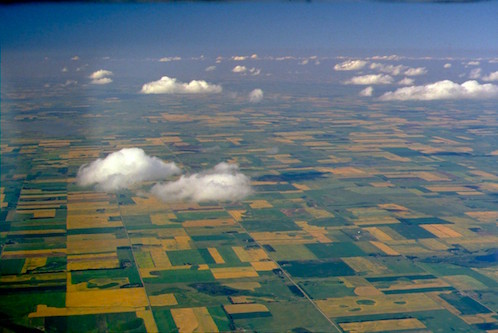 |
|
VFR = Visual Flight Rules means that you fly by mostly looking out the window. You need good visibility and need to stay out of clouds. By looking with your eyes, you can:
- navigate (see where you are relative to landmarks on the ground) so you can go toward your destination without flying through airspace where you are not allowed;
- avoid hitting obstacles, such as mountains, tall towers, or other aircraft;
- control the aircraft — namely, see whether it is climbing (nose up), descending (nose down), or turning (banked left or right);
- find airports and land on the appropriate runway.
All pilots, including private pilots, learn how to fly VFR during their basic pilot training. Visual Meteorological Conditions (VMC) or Visual Flight Conditions (VFC)is the name given to weather that is good enough for you to fly VFR. The specific values of visibility and clouds for VMC are specified by regulations, and depend on your location. For example, in the USA and Canada, the normal weather minimums needed to fly VFR at an airport are: horizontal visibility of 3 statute miles or more, and ceiling (altitude of the lowest overcast or broken cloud base) of 1000 feet above the airport.
Flying VFR is very enjoyable because you can see amazing scenery from the air.
But what happens to pilots with only VFR skills if they accidentally fly into clouds, fog, or other obscuration that reduces their ability to see things outside the window:
- most often pilots are not able to determine if the aircraft is rightside-up.
These VFR pilots are not trained to interprete and ignore their balance signals from their inner ear, or their inertial feelings (seat of their pants).
So the pilots inadvertantly turn the steering wheel (control yoke) in the wrong direction.
This causes the aircraft to stall (lose aerodynamic lift, causing the plane to fall out of the sky), or
spin(a rapid spiral corkscrew descent) until the aircraft crashes on the ground.
Namely, the pilot loses control of the aircraft.
- pilots also lose track of where they are.
Because of this, they might accidentally fly into mountains or other high terrain that they cannot see (called "controlled flight into terrain" by accident investigations).
Or they might fly in the wrong direction and never find their airport, requiring them to make an emergency landing on a road or farm field before they run out of fuel.
Or they might hit tall TV towers or powerlines.
Or they might hit other aircraft.
Or they might accidentally fly into more-dangerous weather such as thunderstorms.
- psychology is another factor. As pilots get into difficult situations, they can panic. Namely, they are so scared about their situation that they become irrational, they forget their emergency training, and they make poor decisions. The result: a bad situation can become worse.
- This video re-creates the fatal flight of a VFR pilot who flew into IMC (instrument meteorological conditions) associated with clouds, rain, and snow in the mountains.
ATC = air traffic control. https://www.youtube.com/watch?v=bLmzy8ZPgtc
Marginally Visual Flight
Conditions for which VFR is allowed, but for which visibility is poor and/or cloud-base is low, are called Marginal VFR (MVFR). It is a lot more work to fly in these conditions because it is hard to see landmarks on the ground, and difficult to see other aircraft that may be near you.
Instrument Flight
IFR = Instrument Flight Rules mean that you can conduct most of the flight by NOT looking out the window. Instead, you:
- navigate using onboard GPS map displays and other navigation signals
- control the aircraft by looking at the instruments on your dashboard (called a "control panel" on aircraft)
- get to airports by following the instructions and clearances
given by air traffic controllers (ATC)
who keep track of your flight and make sure you arrive at your
distination without hitting anything (mountains or other aircraft or
tall towers). You are required to file a flight
plan before you start, so that ATC knows where you want to go.
 |
 |
Above Left: Old style aircraft
instruments.
Above Right: Control tower for air traffic control (ATC).
Below: Newer style "glass cockpit" aircraft instruments. (Accessed Aug
2018 from https://en.wikipedia.org/wiki/File:Cirrus_Interior.jpg )
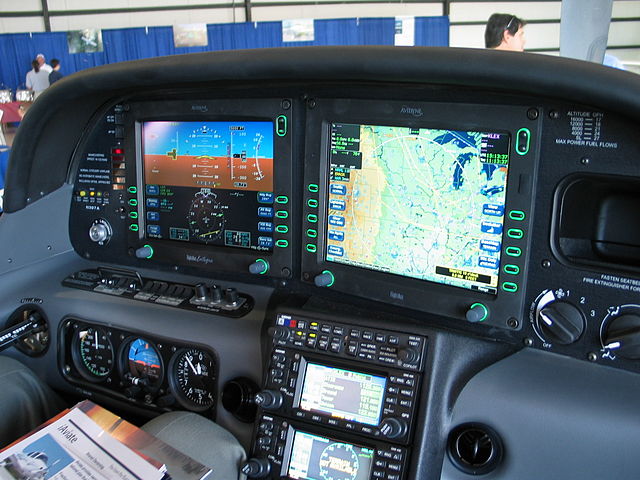
These videos show examples of flights in small aircraft having "glass" (modern flat-panel) cockpit instruments.
- https://www.youtube.com/watch?v=yMr38LpgneE (good example in first 4 minutes of the video)
- https://www.youtube.com/watch?v=-QAt_pOQwZQ (good example during times 6:00 to 7:30)
To fly IFR, you need to:
- be specially trained to believe the instruments and to ignore your normal physiological stimuli like inner-ear signals (that could cause vertigo) and "seat of the pants" feelings of pressure or G-forces on your body
- have an aircraft with the proper instruments and radios, all in good working order
- have the proper charts (paper or electronic)
You can fly IFR in good and in bad weather. Bad weather is called Instrument Flight Conditions (IFC) or Instrument Meteorological Conditions (IMC), i.e. weather for which VFR flight is not allowed.
Nonetheless, even IFR pilots must stay out of thunderstorms (due to violent turbulence, hail, lightning, etc.) and out of volcanic ash (which sandblasts the engines, causing them to fail). Also, not all aircraft are built with the equipment to remove ice that forms on the wings and propellors, so even IFR pilots without the right aircraft need to stay out of clouds with supercooled cloud and rain drops.
Flying IFR is like playing video game where you are given certain clues (readings on your instruments) and you need to figure out what the aircraft is doing and what adjustments you need to make. It takes a lot of attention and can be exhausting if you don't have an autopilot. Unlike a video game, there is no reset button if you crash.
VFR Over the Top
VFR over the top is when there is a layer of clouds below you, so you cannot see the ground to help you navigate. But above the clouds where you are flying, the air is clear (good visibility and few clouds), so you can control the aircraft and avoid hitting other aircraft.
You need some of the skills of the IFR pilot (to navigate and control the aircraft without seeing the ground), but in many countries you do not need an IFR clearance to fly VFR over the top. The problem is that if you get to your destination and the layer of clouds is still below you (with no gaps in the clouds), then you have a serious problem if you cannot legally fly IFR because you cannot see the airport to land on.
Generic Rules for Determining IFR vs. VFR from ceiling and visibility
For flight safety, the 3-D air above the earth's surface is divided into different regions (called airspaces) depending on the types of flight, congestion near airports, closeness to the ground or mountains, and various restricted airspaces. Each different class of airspace has different requirements of visibility and ceiling in order to operate within them. We will not go into the details here.
However, for many situations, the following is a rough guide* (as
used in Canadian Graphical Area Forecasts [GFA] Comments on IFR
Outlook) to
help you determine if the flight can be conducted visually (VFR).
VFR = nice weather. Have fun flying and enjoy the scenery you see out the windows.
MVFR = marginal VFR. Namely, you can legally fly VFR, but you will find it difficult to see and avoid obstacles and other aircraft because of poor visibility and/or low clouds.
IFR means that you are not allowed to fly at all (i.e., you are grounded), unless you and your aircraft are certified for instrument flight and you obtained a clearance to take-off and fly from Air Traffic Control.
Category |
Ceiling (AGL = above ground level)
|
Visibility (SM = statute miles) |
|
| IFR |
cloud base is less than 1,000 ft AGL |
and/or |
less than 3 SM |
| MVFR |
cloud base is between 1,000 ft and 3,000 ft AGL |
and/or |
between 3 and 5 SM |
| VFR |
cloud base is more than 3,000 ft AGL |
AND |
more than 5 SM |
* given in the TC AIM section MET 4.9 Graphical Area Forecast (GFA) Comments Box.
Table 4.3-IFR Outlook Criteria.
Keywords: air traffic
controllers (ATCs), airspaces, flight plan, instrument flight rules
(IFR), instrument meteorological conditions (IMC), marginal VFR (MVFR),
VFR over the top, visual flight conditions (VFC), visual flight rules
(VFR), visual meteorological conditions (VMC), control yoke, stall,
spin, loss of control, panic.
Extra info for Experts; Not Needed for this Course.
- Wikipedia: Instrument Flight Rules
- US Federal Aviation Regulations (FARs): Basic VFR Weather Minimums
- Canadian Aviation Regulations (CARs): 602.114 Visual Flight Rules
- Canadian TC AIM section MET section 4.9 Table 4-3 on ceiling and visibility
- A golden-oldie video of VFR flight into IMC. https://www.youtube.com/watch?v=b7t4IR-3mSo (2 minutes)
Image credits. All figures by Roland Stull, except where indicated near a photo.
